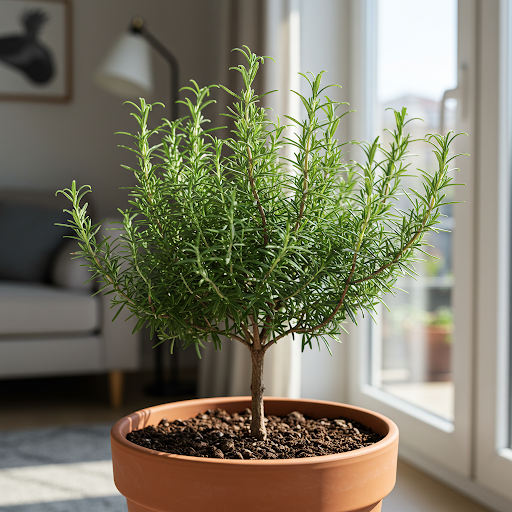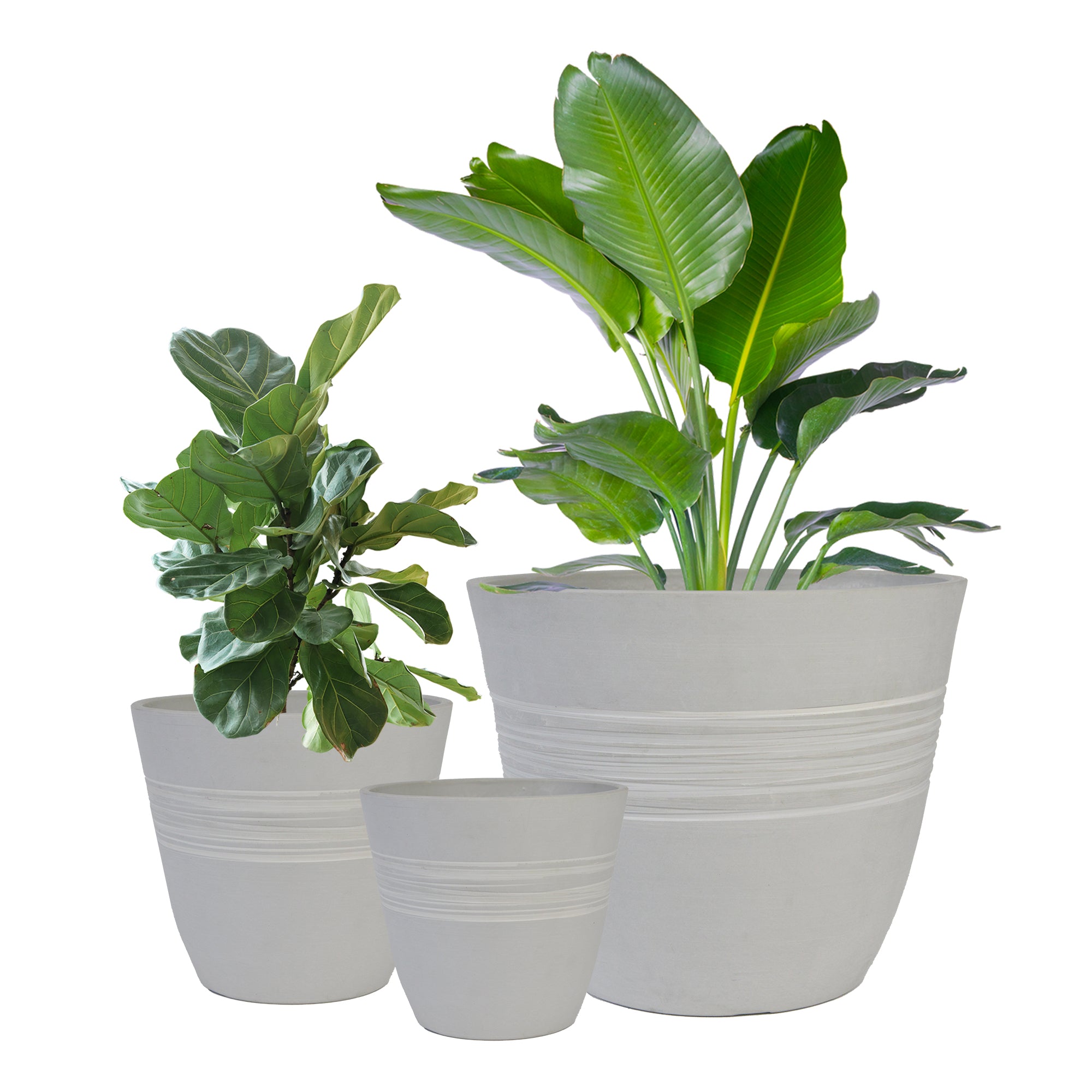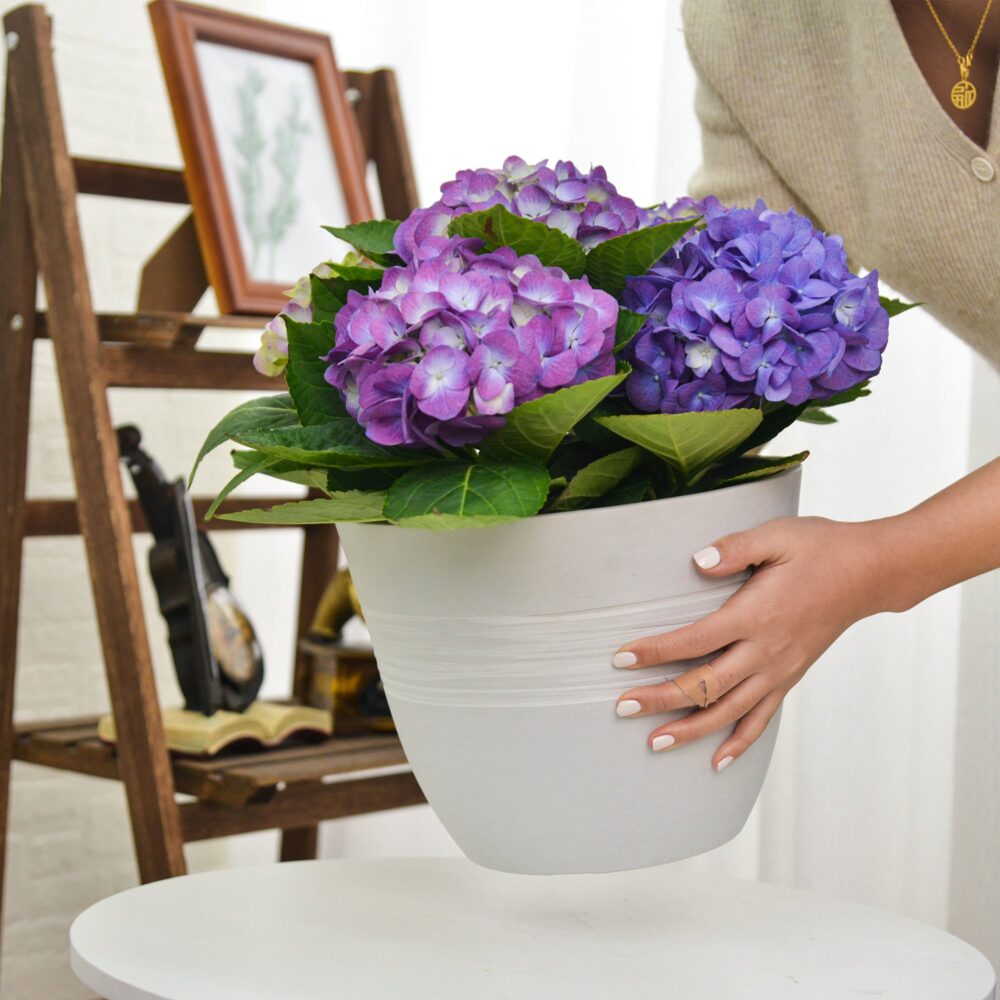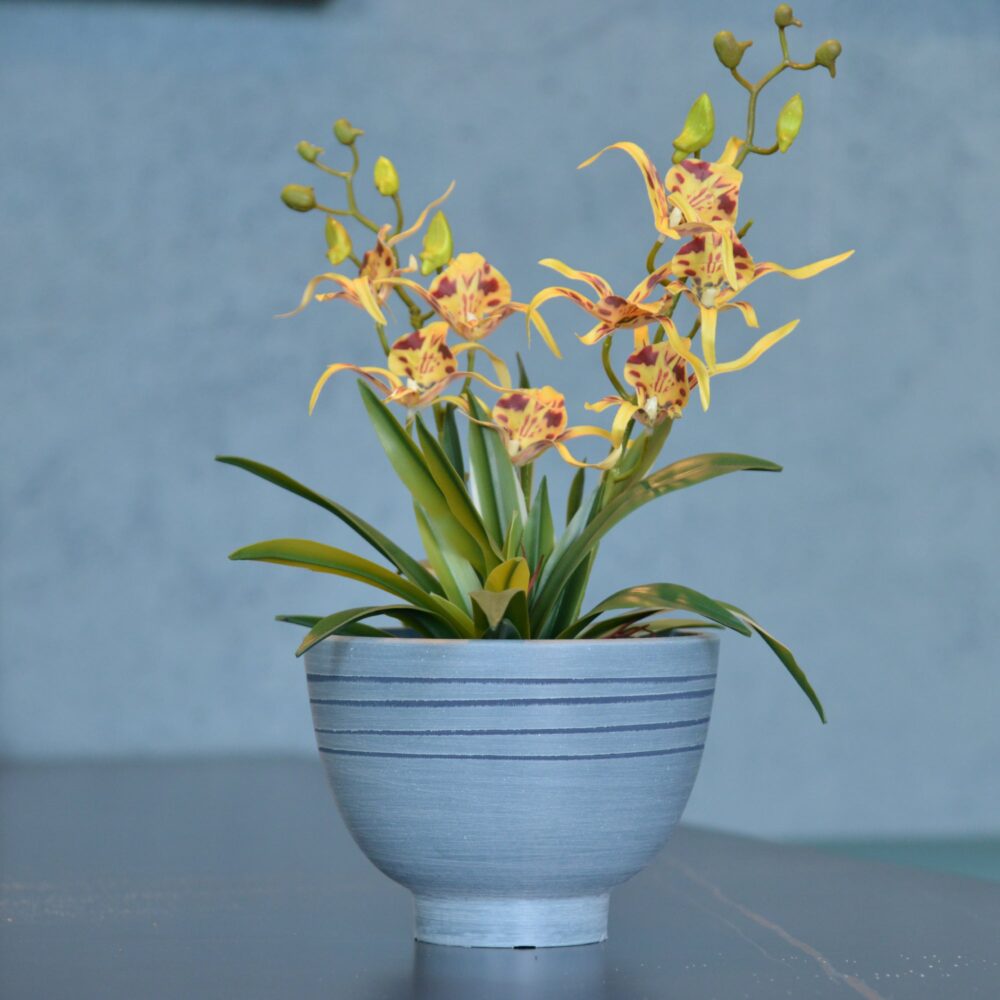Rosemary Indoors: The Complete Guide to Growing Rosmarinus Officinalis at Home
Want to enjoy the fresh, invigorating scent of rosemary and have a constant supply of this versatile herb right in your kitchen? Rosemary, scientifically known as Rosmarinus officinalis, is a fragrant evergreen shrub prized for its needle-like leaves and distinctive aroma and flavor. While traditionally grown outdoors in herb gardens, Rosemary is also a fantastic and relatively easy-to-grow indoor plant, bringing a touch of Mediterranean freshness and culinary convenience to your home. This comprehensive guide will provide you with everything you need to know to grow Rosmarinus officinalisindoors, from selecting the right plant and pot to mastering essential care techniques for a thriving and fragrant Rosemary plant in your home.

Rosemary
What is Rosemary (Rosmarinus officinalis)?
Rosmarinus officinalis, commonly known as Rosemary, is a woody, perennial herb with fragrant, evergreen, needle-like leaves and white, pink, purple, or blue flowers, native to the Mediterranean region. Rosemary is a member of the mint family Lamiaceae, which also includes many other culinary and medicinal herbs. Rosemary is characterized by its aromatic, resinous, evergreen foliage, upright to spreading growth habit, and its distinctive piney-woody fragrance and flavor, which is widely used in cooking, aromatherapy, and traditional medicine. Indoors, Rosemary is primarily grown for its culinary and aromatic value, as well as its attractive, low-maintenance nature. Rosemary is prized for its fragrant foliage, culinary versatility, drought tolerance, and ease of indoor cultivation, making it a popular and practical houseplant.
Can Rosemary (Rosmarinus officinalis) Thrive Indoors?
Yes, Rosemary (Rosmarinus officinalis) can thrive indoors and is an excellent choice for a windowsill herb garden or indoor container plant. While it is native to sunny, dry Mediterranean climates, Rosemary is adaptable to indoor environments, provided it receives sufficient light and good drainage. Growing Rosemary indoors allows you to enjoy its fresh aroma and have a readily available supply of this flavorful herb for cooking year-round, regardless of your outdoor climate.
Ideal Indoor Growing Conditions for Rosemary (Rosmarinus officinalis):
- Varieties of Rosemary (Rosmarinus officinalis) for Indoors: While most rosemary varieties can be grown indoors, some are better suited to container growing due to their1 growth habit. Popular indoor Rosemary varieties include:
- *Rosmarinus2 officinalis ‘Upright Varieties’: Common rosemary types that grow vertically, like ‘Blue Spires’, ‘Tuscan Blue’, ‘Hill Hardy’. These can be pruned to maintain a compact shape.
- *Rosmarinus officinalis ‘Prostrate Varieties’: Creeping or trailing rosemary types, like ‘Prostratus’, ‘Irene’, ‘Lockwood de Forest’. These are excellent for hanging baskets or spilling over pot edges.
- *Rosmarinus officinalis ‘Dwarf Varieties’: Smaller, more compact rosemary types, like ‘Blue Boy’, ‘Roman Beauty’. Naturally stay smaller and bushier, ideal for pots.
- *Rosmarinus officinalis ‘Spice Islands’: Known for its particularly strong flavor and aroma, good for culinary use indoors.
- Light: Rosemary needs very bright light to thrive indoors. It is a sun-loving herb and requires at least 6-8 hours of direct sunlight per day to grow vigorously and maintain its essential oil production, which contributes to its fragrance and flavor. South-facing windows are ideal, providing the most intense sunlight. West-facing windows can also work if they offer several hours of direct afternoon sun. East-facing windows may provide some morning sun, but might not be sufficient on their own, especially in winter. Insufficient light will result in leggy, weak growth, pale foliage, and reduced aroma and flavor. If natural light is limited, supplement with grow lights (full-spectrum LED grow lights are recommended) to provide adequate light intensity and duration. Place grow lights a few inches above the plant canopy and keep them on for 12-16 hours per day.
- Soil: Rosemary needs well-draining soil to prevent root rot. It prefers slightly sandy, loamy soil that is not overly rich. Use a well-draining potting mix, such as a cactus and succulent mix, or a general-purpose potting mix amended with perlite, vermiculite, and coarse sand to improve drainage and aeration. Avoid heavy, moisture-retentive potting mixes. Rosemary prefers slightly acidic to neutral pH (pH 6.0-7.0). Excellent drainage is crucial for indoor rosemary.
- Watering: Rosemary is drought-tolerant once established, and prefers slightly drier conditions rather than consistently moist soil. Water thoroughly when the top inch or two of soil is completely dry. Allow the soil to dry out significantly between waterings. Water deeply until water drains out of the drainage holes. Overwatering is the most common problem with indoor rosemary and can quickly lead to root rot, which is often fatal. Underwatering is preferable to overwatering. In fall and winter, reduce watering frequency significantly as growth slows down. Watering frequency will vary greatly depending on light levels, temperature, humidity, pot size, and season. Check soil moisture regularly by feeling the soil deeply. When in doubt, err on the side of underwatering. Use room temperature water.
- Temperature: Rosemary prefers moderate temperatures during the growing season, ideally between 60°F to 70°F (15°C to 21°C). It can tolerate warmer temperatures, but extreme heat should be avoided. In winter, it benefits from a slightly cooler dormant period with temperatures between 40°F to 50°F (4°C to 10°C), which can help improve its vigor and prevent legginess. However, it can also tolerate average room temperatures year-round if necessary. Avoid exposing it to freezing temperatures indoors. Good air circulation is beneficial.
- Humidity: Rosemary prefers low to moderate humidity. It is native to dry Mediterranean climates and is well-adapted to drier air. High humidity can be detrimental and increase the risk of fungal diseases, especially if combined with poor air circulation. Average household humidity is generally sufficient. Avoid misting rosemary, and ensure good air circulation around the plant.
Planting Your Rosemary (Rosmarinus officinalis) Indoors:
- Starting from Seed, Cuttings, or Potted Plants: Rosemary can be started from seed, but germination can be slow and somewhat unreliable. Propagation from cuttings is more common and easier. The easiest way to start growing Rosemary indoors is to purchase established potted plants from nurseries, garden centers, or grocery stores.
- Propagation from Cuttings: Stem cuttings (3-4 inches long) can be easily rooted in water or moist potting mix. Take cuttings from new growth in spring or summer. Remove lower leaves and place cuttings in water or directly into moist rooting medium.
- Planting Time: Rosemary can be planted or repotted at any time of year indoors, but spring or early summer, at the start of the growing season, is generally recommended for optimal establishment and growth.
Choosing the Right Pots for Indoor Rosemary (Rosmarinus officinalis):
- Suitable Pot Types: Select pots with excellent drainage. Terracotta pots are highly recommended for rosemary as they are porous and allow the soil to breathe and dry out more quickly, which rosemary prefers. Ceramic or plastic pots can also be used, but ensure they have ample drainage holes and be extra cautious not to overwater.
- Drainage: Drainage is absolutely critical for Rosemary to prevent root rot. Ensure your chosen pot has large drainage holes at the bottom. You can also add a layer of gravel or pot shards at the base of the pot to further improve drainage.
- Pot Size: Choose a pot that is appropriately sized for the current size of the plant and allows for some growth. Rosemary is a moderate grower indoors and will need repotting into larger containers as it matures. Start with a pot that is 1-2 inches larger in diameter than the root ball when repotting. Young rosemary plants can start in 4-6 inch pots. Mature indoor Rosemary plants may eventually need pots that are 8-12 inches in diameter or larger, depending on the variety and desired size.
- Potting Mix: Use a well-draining potting mix as described earlier (cactus/succulent mix, or general-purpose mix amended for drainage).
Essential Care Tips for a Thriving Indoor Rosemary Plant (Rosmarinus officinalis):
- Watering Schedule: “Water Sparingly, Allow Soil to Dry Out Completely Between Waterings”. Water only when the top 1-2 inches of soil are completely dry. Allow the soil to dry out significantly between waterings. Err on the side of underwatering rather than overwatering.
- Light Management: Intense Bright Light is Essential. Provide at least 6-8 hours of direct sunlight per day. Supplement with grow lights if natural light is insufficient, especially in winter.
- Pruning (Regularly for Bushiness and Harvest): Prune Rosemary regularly to maintain a bushy shape, encourage new growth, and harvest leaves for culinary use. Prune in spring and summer, and lightly throughout the year as needed. Regular pruning prevents legginess and promotes denser, more flavorful foliage.
- Fertilizing (Lightly, Infrequently): Rosemary is not a heavy feeder and does not require frequent fertilization. Fertilize sparingly, only 1-2 times during the growing season (spring and summer) with a balanced liquid fertilizer (10-10-10 or similar) diluted to half strength, or a fertilizer specifically formulated for herbs. Follow package instructions carefully. Avoid over-fertilizing, which can lead to weak, leggy growth and reduced aroma.
- Air Circulation is Important: Ensure good air circulation around your indoor rosemary plant to help prevent fungal diseases and promote healthy growth. Open windows occasionally (when temperatures are suitable) or use a small fan to improve air movement.
- Repotting Schedule: Repot Rosemary every 1-2 years, or when it becomes root-bound or the potting mix is depleted. Repot in spring or early summer. Repotting into fresh, well-draining potting mix is beneficial for their long-term health.
- Pest and Disease Control: Indoor rosemary is relatively pest and disease-resistant if grown in proper conditions. Monitor for occasional pests like spider mites, aphids, or whiteflies. Root rot is the most common disease issue, caused by overwatering and poor drainage. Ensure excellent drainage and avoid overwatering to prevent root rot and fungal problems. Treat any pest infestations promptly with insecticidal soap or neem oil.
Popular Rosemary Cultivars for Indoor Growing (within Rosmarinus officinalis):
- *Rosmarinus officinalis ‘Upright Blue’ (Upright, classic rosemary)
- *Rosmarinus officinalis ‘Prostratus’ (Trailing Rosemary)
- *Rosmarinus officinalis ‘Tuscan Blue’ (Upright, robust flavor)
- *Rosmarinus officinalis ‘Spice Islands’ (Strong flavor, upright)
- *Rosmarinus officinalis ‘Blue Boy’ (Dwarf, compact)
- *Rosmarinus officinalis ‘Roman Beauty’ (Dwarf, bushy)

Rosemary
In Summary:
Growing Rosemary (Rosmarinus officinalis) indoors is a rewarding way to bring the fresh, invigorating scent and culinary versatility of this classic herb into your home. Its fragrant foliage and relatively low-maintenance nature make it a practical and delightful houseplant. By providing intense bright light, well-draining potting mix in pots with excellent drainage (terracotta is ideal), watering sparingly and allowing the soil to dry out significantly between waterings, providing good air circulation, and offering regular pruning, you can successfully cultivate thriving and fragrant Rosemary plants indoors and enjoy fresh rosemary year-round.
For more detailed botanical information and to explore the cultivation and uses of Rosmarinus officinalis, you can visit the Wikipedia page on Rosmarinus officinalis.
Important Note: Rosemary (Rosmarinus officinalis) is considered non-toxic to humans and pets, making it a safe choice for households with children and animals. The primary care challenge with indoor rosemary is avoiding overwatering, which can lead to root rot. Providing sufficient bright light and excellent drainage are key to successful indoor rosemary cultivation. With attention to these needs, you can enjoy fresh, home-grown rosemary indoors for culinary and aromatic purposes.
Plant Pots 6 inch 8 inch 12 inch for Indoor Outdoor Plants, Set of 3 Modern Decorative Planter with Drainage Hole, Decorative Flower Pots
By greenship-seo|2025-04-10T06:38:40+00:00January 16, 2025|Categories: Hand-carving Series|Tags: Decorative Flower Pots|
11V
By greenship|2024-08-13T03:05:48+00:00August 13, 2024|Categories: Hand-carving Series|
Planter for Indoor Outdoor Plants, Set of 2 Modern Decorative Plant Pots with Drainage Hole, Decorative Flower Pots
By greenship-seo|2025-01-14T12:26:44+00:00January 14, 2025|Categories: Hand-carving Series|Tags: Decorative Flower Pots|
Modern Plant Pots丨Planter for Indoor Plants,8 inch or 10 inch Plant Pots with Drainage Hole,Decorative Flower Pots
By greenship-seo|2025-04-10T08:32:55+00:00January 7, 2025|Categories: Hand-carving Series|Tags: Decorative Flower Pots, Self-Watering Pots|
KC2-21G
By greenship|2024-08-13T06:19:08+00:00August 13, 2024|Categories: Hand-carving Series|
8 inch/10 inch Planter Indoor Plants, 2 Pack Modern Decorative Plant Pots with Drainage Hole, Cute Bowl Shape Flower Pots
By greenship-seo|2025-04-10T08:03:42+00:00January 9, 2025|Categories: Hand-carving Series|Tags: Decorative Flower Pots, Self-Watering Pots|






